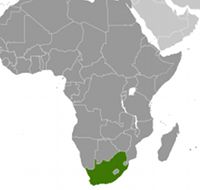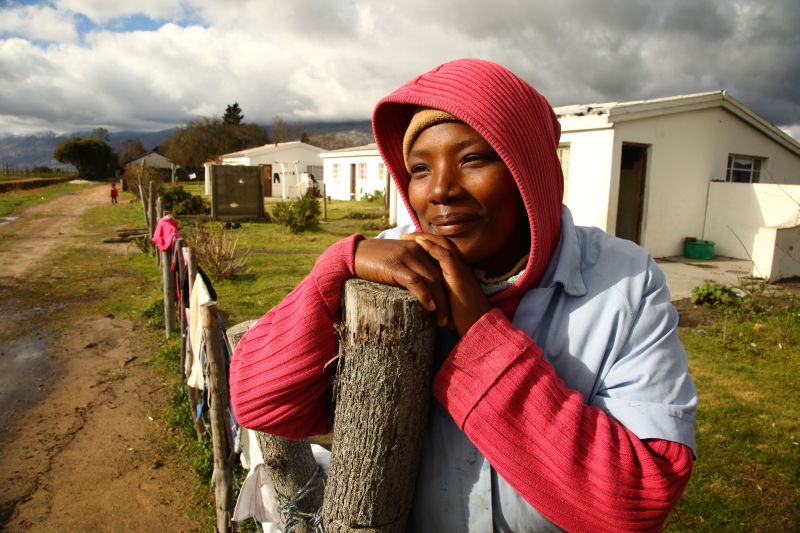South Africa
South Africa is a country of contrasts. Despite making great leaps in the transition from apartheid to democracy, half the population live below the poverty line. Poor people have little access to economic opportunity or basic services, and inequality has increased across race and gender.
In addition, the devastating HIV and AIDS pandemic overshadows the country and threatens the lives of up to 5.7 million people.
In response to this crisis, our work in South Africa focuses on reducing the devastating impact of HIV and AIDS. We’re currently supporting some of the country’s most vulnerable people, including children orphaned by AIDS and the elderly and sick by ensuring they have access to food and the means to support themselves.
Tackling HIV and AIDS
South Africa has one of the highest HIV prevalence rates in the world. With 18% of the population infected, including a tragic 28% of pregnant women. Tackling this crisis is one of the country’s gravest challenges.
Oxfam works with over 40 partner organisations to lessen the terrible impact of HIV and AIDS. Our programs provide food to keep children and adults healthy (especially children orphaned by AIDS), and home-based care for those already living with HIV and AIDS. We use innovative ‘edutainment’ programs to promote awareness and prevention, and lobby for the rights of the most vulnerable people.
Together we’re educating communities about HIV prevention and focusing on behaviour change. We’re also supporting voluntary counselling, providing detection tests and treatment. And we’re supporting home-based care and nutritional educational programs.
Oxfam also supports partners to lobby the government for improved services, access to treatment and social grants. Watch two videos in which community care workers from our partner organisation Woza Moya discuss their work.
Providing food and means of making a living
Communities living in rural KwaZulu-Natal, are affected by changing weather patterns, long term drought, lack of employment opportunities as well as a high incidence of HIV and AIDS. We work with local partner organisations to strengthen access to food and livelihoods through the provision of emergency food parcels, improving water harvesting systems, planting food gardens and providing skills development and training.
Through our partner Hillcrest, we’re providing income generation opportunities that are making a big difference to the lives of many women living with HIV.
Child social protection
Our Child Social Protection program is an important aspect of our work. Our partners work towards providing care and support and addressing the needs of orphans and vulnerable children, their caregivers and their families. We work towards ensuring a safe and protective environment including access to social services, access to education and early childhood development, access to nutritional sources of food, as well as providing treatment, care and support.
Our partners include Keep the Dream 196, a community-based child protection organisation that uses mentoring programs to provide better care for orphans and vulnerable children.
Gender equality
Gender equality is central to our work on HIV and AIDS. We are working with our partners toward raising awareness of women’s rights and challenging traditional gender roles within communities. We’re particularly focused on women’s rights in relation to HIV prevention and the ability of women to negotiate safe sex, and the burden of care placed on women. Through working with men, young and old, our partners are challenging traditional views and educate on women’s rights.

Fast facts
- Population:
- 49.32 million (July 2009 est)
- Population living below the poverty line:
- 50%
- Adult literacy:
- male 87%, female 85.7%
- Life expectancy:
- male 53.5 years, female 57.2 years
- HIV/AIDS adult prevalence rate:
- 17%
- Infant mortality rate:
- 47.7/1,000 live births
Source: CIA: The World Factbook
